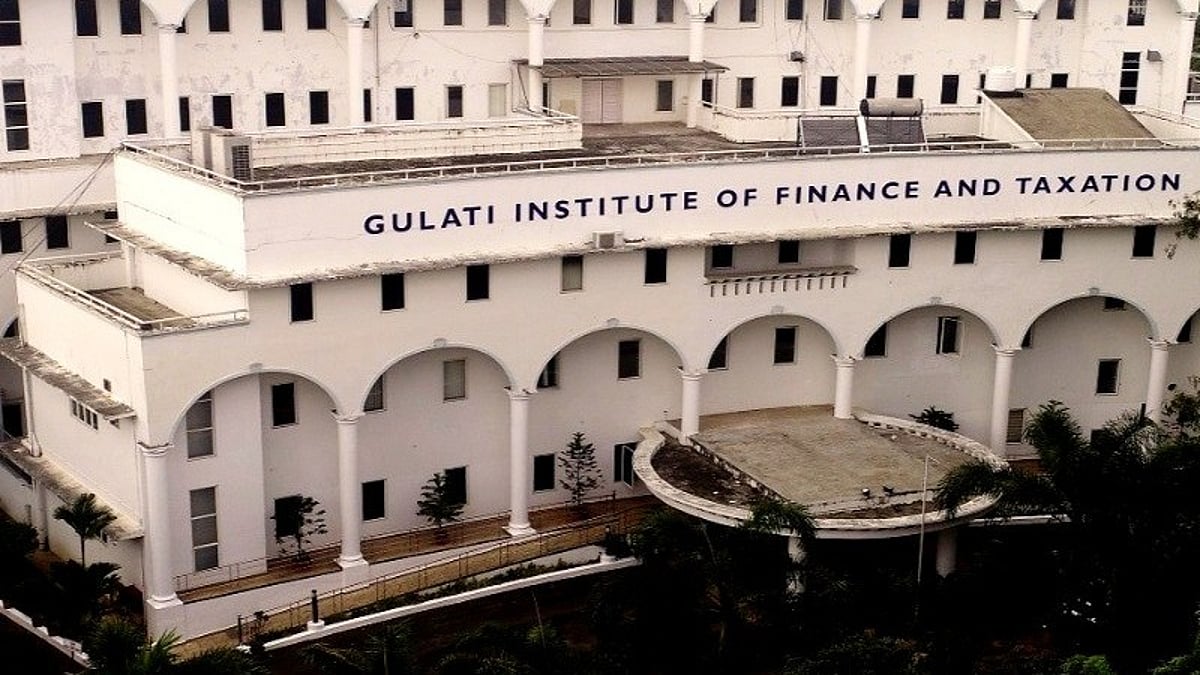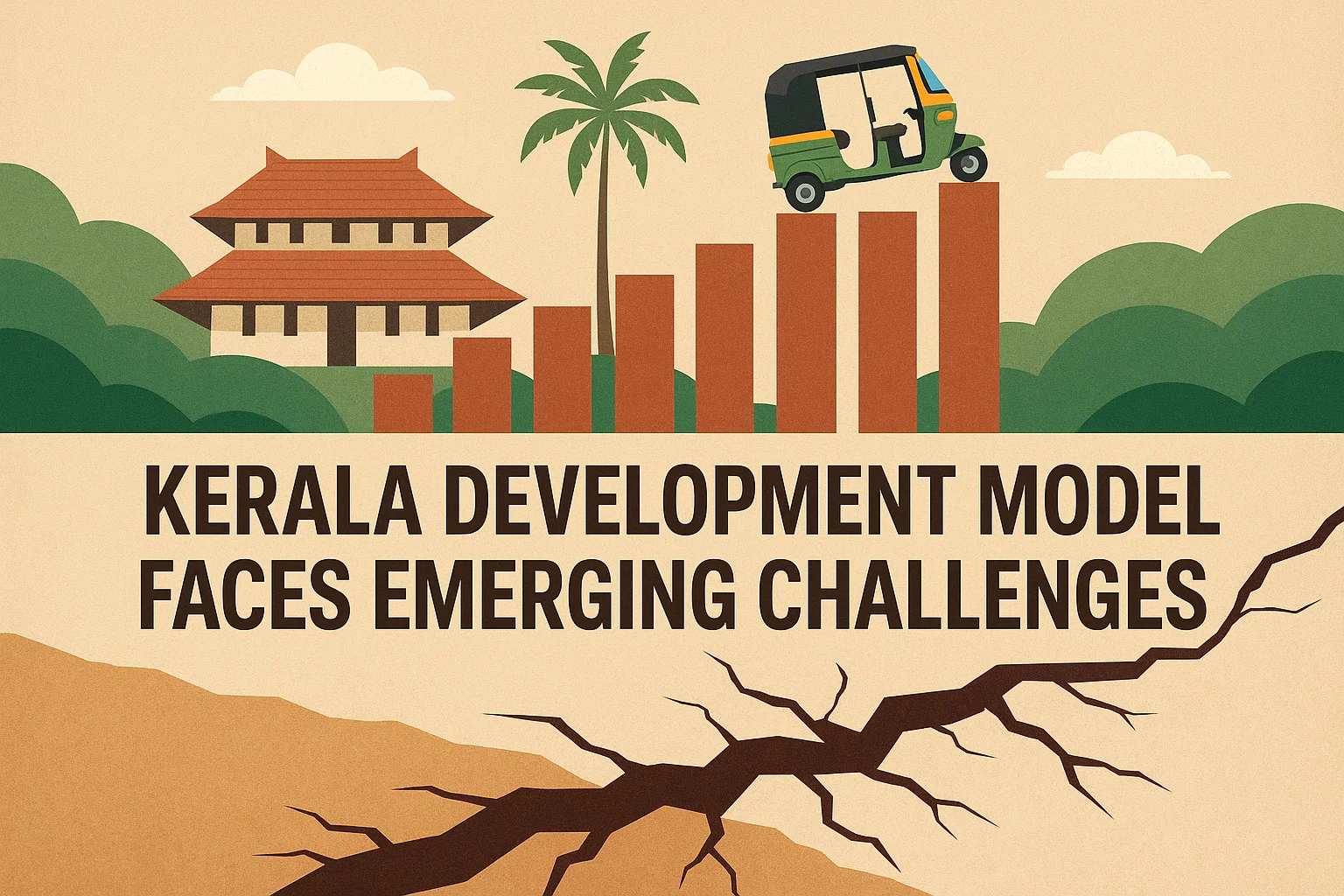Kerala Development Model Faces Emerging Challenges
Kerala’s development model has made it India’s first poverty-free state in 2025, but challenges like weak industrial growth, fiscal stress, and high unemployment threaten its sustainability. Explore insights on Kerala’s economy and future growth path.
Kerala Development Model Faces Emerging Challenges | Kerala Economy & Growth Analysis 2025
Kerala’s recognition in 2025 as India’s first poverty-free state marks a major milestone in its decades-long pursuit of inclusive development. The state’s achievements in education, healthcare, and social equity remain unmatched in India. However, Kerala now faces the pressing need to revive job creation, attract industrial investment, and sustain welfare gains amid tightening fiscal conditions.

Why has Kerala performed well in socio-economic indicators?
1. Human Development Focus:
Kerala’s model has always been people-centric, prioritizing education, healthcare, and gender equality over purely growth-driven strategies. With literacy exceeding 98% and 100% digital literacy achieved in 2025, it continues to lead national rankings (Census 2011; Kerala Planning Board, 2024). Universal school enrolment and social empowerment initiatives have fostered an educated, aware citizenry.
2. Robust Health System:
The state’s infant mortality rate of 5.1 per 1,000 live births—comparable to developed countries—reflects its strong public health network. The Aardram Mission and community health models built on primary healthcare have strengthened preventive and curative capacities, particularly during pandemics. Kerala’s approach emphasizes grassroots medical outreach, decentralized governance, and health equity.
3. Poverty and Gender Outcomes:
According to NITI Aayog’s Multidimensional Poverty Index (2025), Kerala’s poverty rate stands at just 0.55%, making it the first Indian state to eliminate multidimensional poverty. Its success rests on high female literacy, low fertility rates, and strong gender parity in education and healthcare access. Women’s participation in Kudumbashree and self-help groups has also contributed to social empowerment and micro-enterprise growth.
4. High Per Capita Income and Service Dominance:
Kerala’s per capita income reached ₹3.08 lakh in FY25, placing it 7th among Indian states (MoSPI). However, much of this growth is driven by the service sector—notably tourism, education, healthcare, and Gulf remittances, which account for nearly one-fourth of state income. This external dependence, while boosting consumption, poses structural challenges for sustainable employment generation.
What are the major emerging challenges?
1. Weak Industrial and Manufacturing Base:
Kerala’s manufacturing share of GSDP is around 9%, compared to the national average of 14%. Despite its skilled workforce, factors like high labour costs, limited land availability, and procedural bottlenecks have hindered industrial investment. Projects often face environmental and bureaucratic delays, reducing investor confidence. Without industrial diversification, job creation will remain limited.
2. Employment Paradox: Kerala Development Model
Kerala has one of the highest labour force participation rates (45%), yet unemployment—especially among youth and women—remains double the national average (PLFS 2023–24). The service sector’s dominance, coupled with limited formal manufacturing, leads to educated unemployment and migration of skilled youth abroad. This “employment paradox” threatens long-term social stability and economic inclusiveness.
3. Fiscal Pressures and Declining Social Spend:
While Kerala’s welfare model remains its biggest strength, fiscal sustainability is weakening. Data from the RBI (2024) shows social sector spending has declined from 39.9% of total expenditure in FY11 to 31.6% in FY25, as pension and salary obligations consume a larger budget share. The resulting squeeze restricts capital investment in infrastructure and new welfare initiatives.
Way Forward
Kerala needs a balanced growth strategy that complements its welfare strengths with industrial modernization and fiscal innovation. Key measures include:
-
Simplifying industrial clearances and promoting green manufacturing zones.
-
Enhancing ease of doing business to attract MSMEs and tech startups.
-
Improving public finance management and leveraging PPPs for infrastructure.
-
Expanding skill-based education aligned with new-age industries like AI, biotech, and clean energy.
Kerala’s developmental story stands as a model of human progress, but its next leap depends on integrating industrial vitality, job creation, and fiscal prudence with its enduring social commitments.
Subscribe to our Youtube Channel for more Valuable Content – TheStudyias
Download the App to Subscribe to our Courses – Thestudyias
The Source’s Authority and Ownership of the Article is Claimed By THE STUDY IAS BY MANIKANT SINGH





